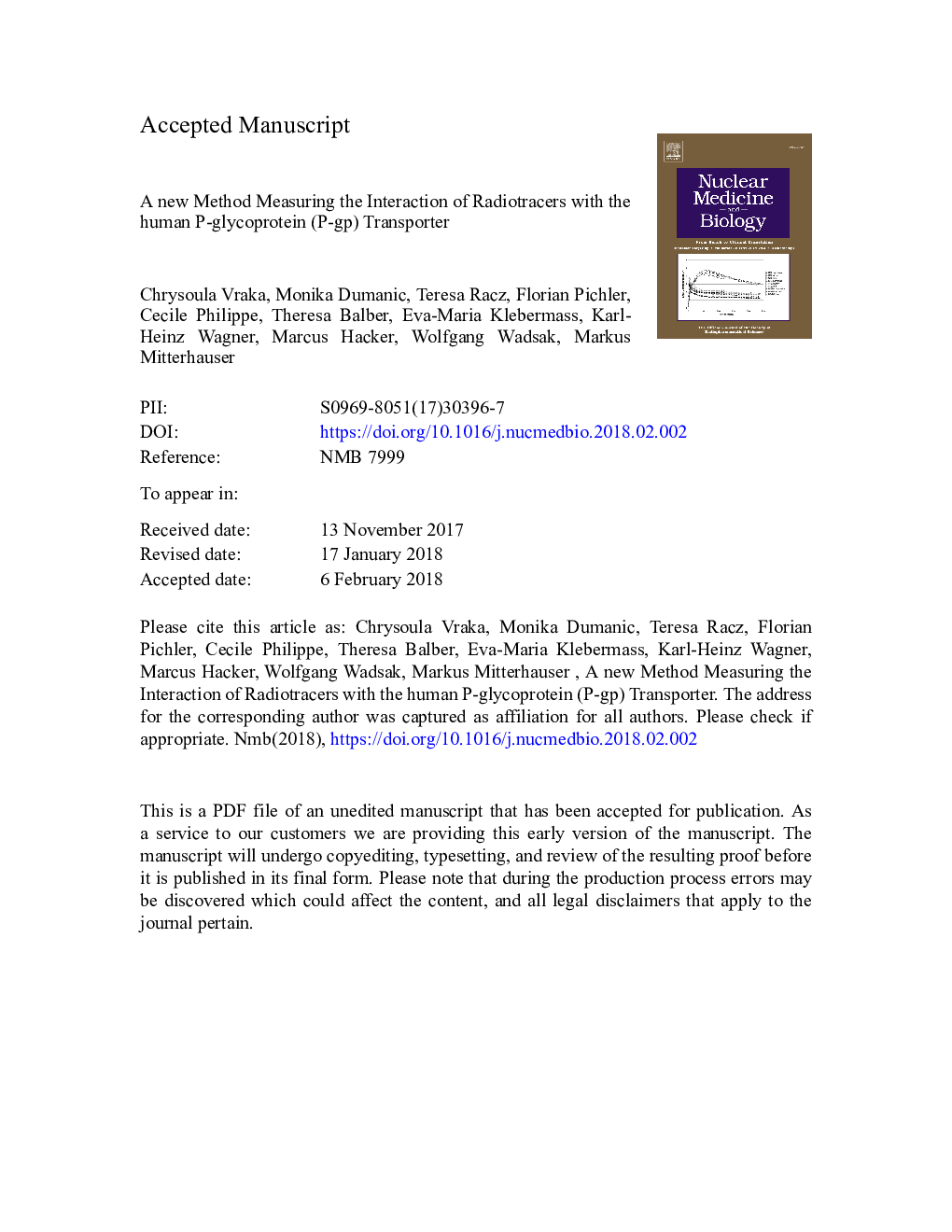| Article ID | Journal | Published Year | Pages | File Type |
|---|---|---|---|---|
| 8457659 | Nuclear Medicine and Biology | 2018 | 31 Pages |
Abstract
In drug development, biomarkers for cerebral applications have a lower success rate compared to cardiovascular drugs or tumor therapeutics. One reason is the missing blood brain barrier penetration, caused by the tracer's interaction with efflux transporters such as the P-gp (MDR1 or ABCB1). Aim of this study was the development of a reliable model to measure the interaction of radiotracers with the human efflux transporter P-gp in parallel to the radiolabeling process. LigandTracer® Technology was used with the wildtype cell line MDCKII and the equivalent cell line overexpressing human P-gp (MDCKII-hMDR1). The method was evaluated based on established PET tracers with known interaction with the human P-gp transporter and in nanomolar concentration (15â¯nM). [11C]SNAP-7941 and [18F]FE@SNAP were used as P-gp substrates by comparing the real-time model with an uptake assay and μPET images. [11C]DASB [11C]Harmine, [18F]FMeNER,[18F]FE@SUPPY and [11C]Me@HAPTHI were used as tracers without interactions with P-gp in vitro. However, [11C]Me@HAPTHI shows a significant increase in SUV levels after blocking with Tariquidar. The developed real-time kinetic model uses directly PET tracers in a compound concentration, which is reflecting the in vivo situation. This method may be used at an early stage of radiopharmaceutical development to measure interactions to P-gp before conducting animal experiments.
Keywords
Related Topics
Life Sciences
Biochemistry, Genetics and Molecular Biology
Cancer Research
Authors
Chrysoula Vraka, Monika Dumanic, Teresa Racz, Florian Pichler, Cecile Philippe, Theresa Balber, Eva-Maria Klebermass, Karl-Heinz Wagner, Marcus Hacker, Wolfgang Wadsak, Markus Mitterhauser,
